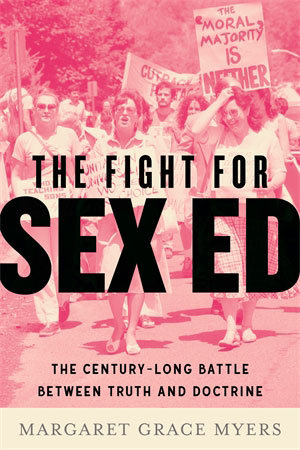Stepping in at last, in March 1987, after “nearly seven years of silence,” as Julie Johnson of the Baltimore Sun put it, Reagan himself finally spoke out on AIDS. He called it “Public Health Enemy No. 1” and spoke in favor of sex ed in schools, so long as it was “taught in connection with values.” He noted that he [didn’t] “quarrel” with Koop’s public-health philosophy on sex ed, though he also opined: “When it comes to preventing AIDS, don’t medicine and morality teach the same lessons?”
This was the same conclusion that Dr. Morrow had reached eighty years prior. And it was certainly still true that abstinence from all sexual activity did necessarily preclude someone from becoming pregnant, and it also considerably reduced the risk of contracting an STI.
But now medicine offered options that hadn’t been available at the turn of the century. The modern condom in particular had emerged as an almost miraculous little device: cheap, relatively simple to use, easy enough to manufacture, and highly effective at preventing both pregnancy and STIs, including AIDS.
But for people who saw abstinence as the point, educating students on condoms was identical to promoting sex. No argument, however reasonable and fact based, could sway Schlafly and her vanguard of this notion—and now they had curricula like Sex Respect and Teen-Aid, which theoretically provided sex ed while excluding all information about contraception. With this deceitful framework now in place, states could comply with Reagan and Koop’s call for sex ed in schools without having to teach young people a single thing about how to actually prevent pregnancy or avoid STIs.
By December 1987, seventeen states and Washington, DC, had newly mandated AIDS education in their public schools—twelve more states compared to the five that had done so just seven months earlier. However, these programs differed wildly in content, showing again just how much terms like sex education could be used and abused.
Language was finessed in other ways, too. For instance, California passed a bill that declared abstinence “the primary” rather than “a primary” way of preventing AIDS. The bill’s language also claimed that other methods, like condoms, “may reduce the risk of spreading the disease.”
When it came to sex ed, the late 1980s were a time of immense debate in school districts nationwide. Yet for all the drawn-out meetings and heated deliberation, the end results were often nothing more than a vague guideline that sex ed needed to “stress abstinence,” which really meant a program that differed very little from any standard sex ed class of previous decades.
